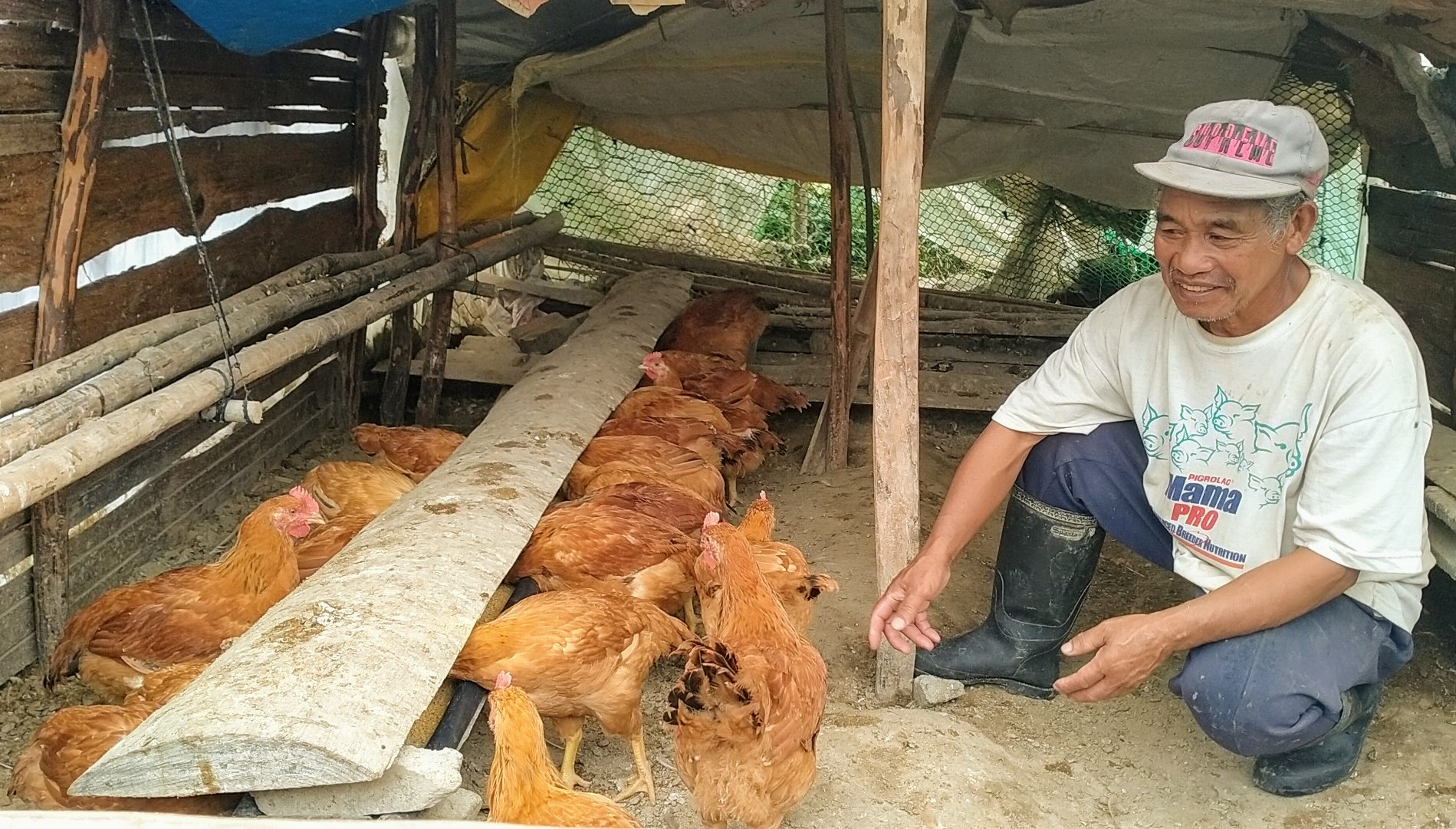There is no retirement age in farming. The wide spectrum of activities in agriculture enables experienced elderly workers to remain socially integrated especially in economic activities.
Farming can be done by almost everyone, be it as simple as putting up a garden in a small green space of a stone building to produce staple kitchen needs. In short, agriculture is age-inclusive.
It is important for the health of the old age sector, especially those who worked their whole lives to still be considered and enabled to pursue their passions, activities, and still be involved in networks that can create or sustain relationships, to feel a sense of still being needed, able, and in touch.
The Department of Agriculture – Special Area for Agricultural Development (DA-SAAD) Program has been empowering not just the marginalized sector but the sub-sectors comprising it. The program offers an equal opportunity to community members by means of distributing agricultural capital, education, and technical support, made possible by the cooperation of the regional, provincial, and local government units. The program helps in capturing the productive potential of a community, including the elders.
There is no retirement age in agriculture
Enrique Billet, 69, finds comfort in tending to his free-range chickens acquired through the DA-SAAD Program in Mountain Province.
“Agyamanak iti dytoy nga opportunity ta imbag la nga isu nalag-an nga trabaho-en iti padak nga lumakayen [I am grateful for this opportunity since the labor it requires suits my ability as an elderly],” he happily shared.
Tatang Enrique, attaining primary education at most during his youthful days, makes a living selling his produce from alternately tending to his camote fields and vegetable gardens.
He belongs to the Kankanaey tribe of elders, whose opinions are highly solicited during consultations during conflict management in the community.
Tatang Enrique is a father to five children with 23 grandchildren and three great-grandchildren who call him Lolo or Tatang.
His whole family concentrated on gardening, producing highland vegetables such as beans, potatoes, green peas, Chinese cabbage, and cabbage, leaving most of his production area under their care.
Currently living with his youngest son, Tatang manages to personally cultivate his crop, as an advantage of being fit. He said his secret to maintaining his health is nutritious food and mountain tea or gipas.
With his garden, Tatang usually earns around Php 5,000 from selling cultivated beans and other lightweight vegetables to nearby barangays with help from his wife.
Tatang Enrique’s SAAD Project
In September 2020, Tatang Enrique was chosen as a beneficiary to the SAAD’s Free-range Chicken Production Project in Napua, Sabangan.
He received 47 four-week-old brown chickens, a sack of poultry starter feed, two bags of 19 kilograms (kg) poultry grower feeds, four sacks of 11kg poultry finisher feeds, a roll of fishnet, Amazon wires, and a plastic drum as materials for the chicken fence.
Maintaining his farm, Tatang starts his day attending to his SAAD-granted chicken inputs before going to his vegetable garden.
In three months, the chickens reached the marketable size and were sold at Php 450 per head giving him an income of Php 21,150 in December 2020.
Part of his earnings was used to acquire 20 additional brown chickens and feeds for his second production cycle, where he earned Php 10,000 in March 2021.
This time, Tatang Enrique invested all his sales for another cycle where he bought 65 day-old chicks at Php 95 per head for a total of Php 6,175 and two sacks of starter feed at Php 3,000 (1,500/sack).
As an elder implementing livelihood under the program, Tatang Enrique is assisted by able representatives among his household members or is receiving re-echoed information and monitoring progress.
Capitalizing on experience
Tatang Enrique is no stranger to the downside of raising chickens, encountering eight mortalities since he started rearing free-range chickens from the project. He addressed the problem through the practice of isolation or separating sick and weak stocks from the healthy group as well as provision of multivitamins.
When his third cycle stocks reached the marketable size, his stocks intended for selling were turned down due to lower-priced broiler-culls in the market.
“Awan maaramidak ta panawen met piman ti kalaban ket sakto pay nagsi-ngato ti gagatangen ket syempre mas pilien da ti praktikal mas nabababa presyo nan ga broiler cull. Nu pay man kasta ket kasapulan nga agtuloy ti biyag,” Billet said in an interview.
[I cannot do anything because sometimes we are all caught by the circumstances that we all must face. I cannot blame them if they have to be practical in buying broiler culls which are much cheaper compared to brown chicken. I have no choice but to accept and move forward in life.]Considering the consumption and expenses for his stocks if they stay for another month, he decided to sell the stocks around his area, and to his relatives to cut down expenses.
Determined to continue his farming journey, Tatay Enrique looks forward to receiving inputs for the swine repopulation program scheduled in their area as part of the SAAD’s 2021 interventions. His savings from the chicken production is allotted for establishing a pen for his upcoming venture.
The project is in support of the national efforts for the revitalization of the swine industry in the country.
Tatay Enrique is so used to farming that he regards his farm work as his daily exercise. At his age, he is thankful to be considered as SAAD beneficiary, while performing his duty as one of the elders in their tribe. Tatay is still far from considering stopping and is still up to discovering other agricultural ventures. ###
Writer: Dinah Ay-yango, SAAD Mountain Province Information Officer I
Editors: Myer Mula, Ulysses Lustria, Jr., Jhomai Canlas, and Jessa Mae Gabon
Sources:
SAAD Community Development Officer/Provincial Development Officer, SAAD Mountain Province
Mr. Enrique Billet, SAAD beneficiary


Comments (0)